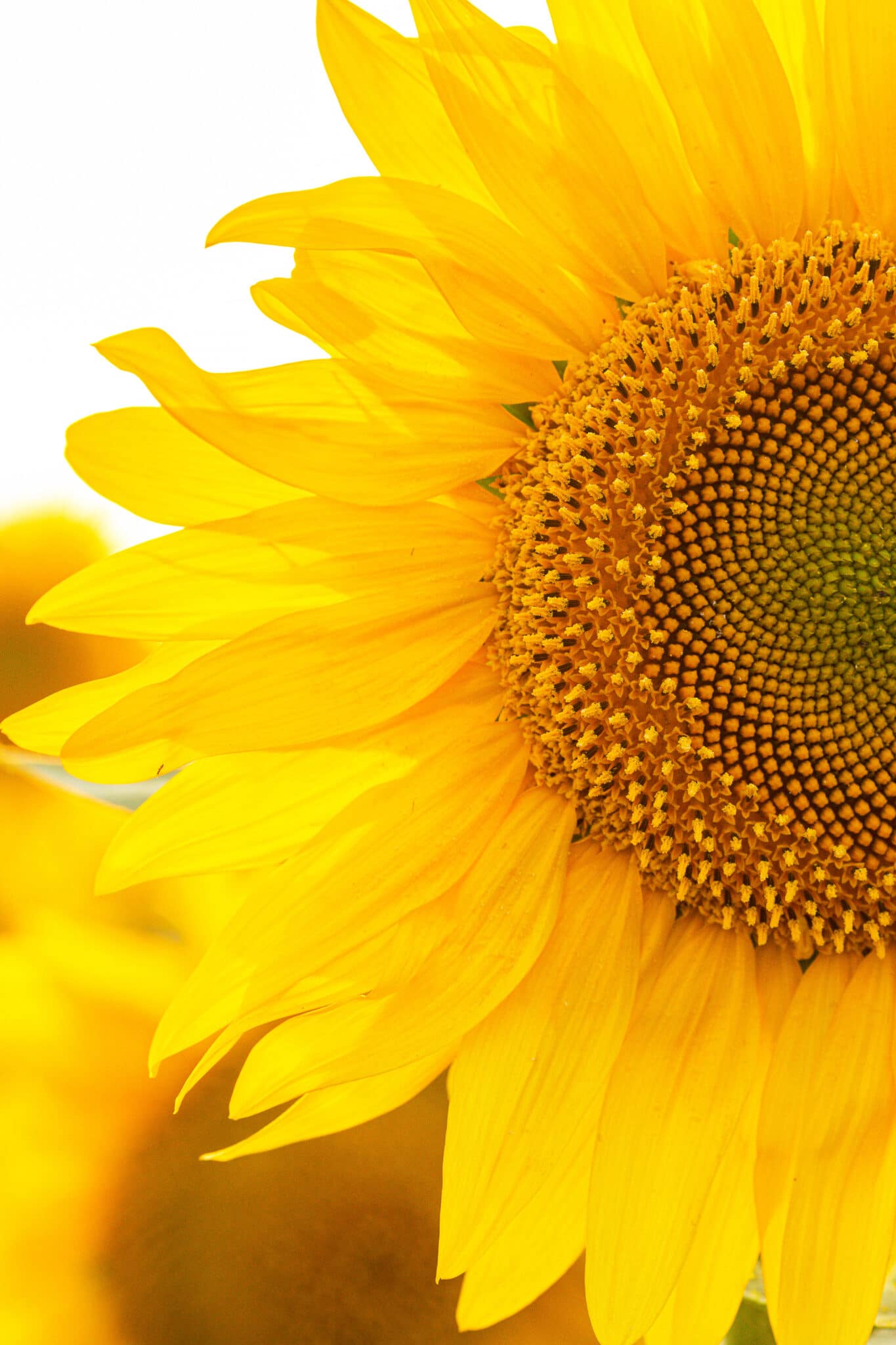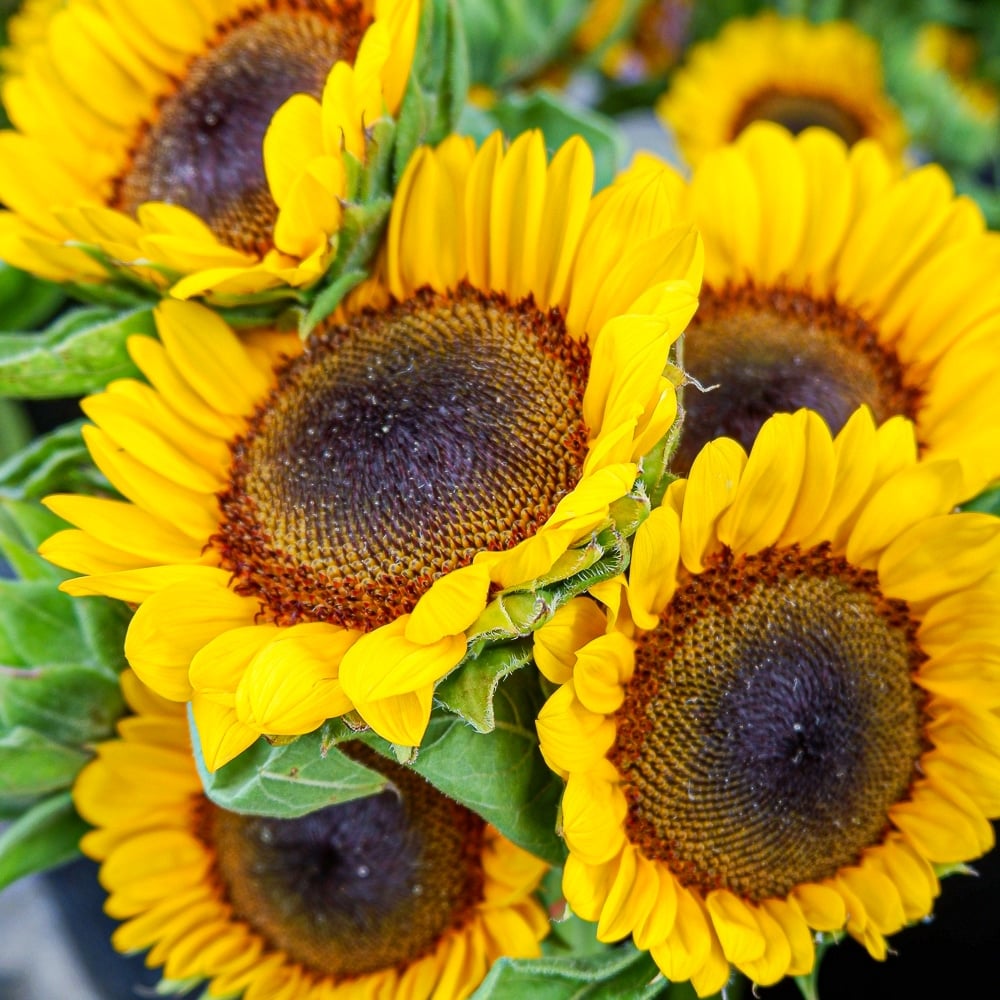How Late Can You Plant Sunflowers?
Sunflowers bring such a sense of warmth and joy to my garden that I’ve found myself wondering as the season went on, how late can you plant sunflowers? Because when I planned my garden I didn’t realize I needed a wall of beautiful yellow sunflowers! If you’re like many of us who didn’t think about fall flowers while busy with summer gardening, you’re not alone. This article is for anyone looking to add late-season color to their outdoor spaces. Considering your local climate and soil quality, we’ll cover the best time to plant sunflower seeds. Whether you’re new to gardening or want to keep your garden blooming a bit longer, this guide is here to help you grow those late sunflowers successfully.

In addition to timing, we’ll discuss the different varieties of sunflowers that thrive in late planting conditions, offering options for every garden size and aesthetic preference. You’ll learn about the importance of soil preparation and watering schedules to ensure healthy growth, even when planting later in the season. With these insights, you’ll be equipped to extend your gardening season and enjoy the joy of growing sunflowers well into the autumn months.
Optimal Timeframe for Planting Sunflower Seeds
Best Time to Plant
Plant sunflowers after the last frost date in your area. This ensures they won’t be damaged by cold temperatures.
Sunflowers thrive in warm weather, so aim to plant them when the soil has warmed up sufficiently.
Late Planting Considerations
If you missed the optimal planting window, don’t worry. You can still plant sunflowers later in the season.
Late-planted sunflowers might bloom smaller or have a shorter flowering period but will still grow successfully.

Late Planting of Sunflowers
Best Time for Late Planting
If you missed the optimal planting window, late planting of sunflowers can still yield beautiful blooms. Consider planting in late spring or early summer to allow enough time for growth before the first frost. Sunflowers are resilient and can thrive even with a later start.
Sunflowers are known for their adaptability, so don’t worry if you miss the ideal timeframe. Choose quick-maturing varieties like ‘Autumn Beauty’ or ‘Sunrich Gold’ to ensure blooming before the season ends. These varieties typically reach maturity in 60-80 days, perfect for late plantings.
Tips for Successful Late Planting
- Prepare your soil by removing weeds and adding compost to enrich it.
- Plant seeds about 1 inch deep and 6 inches apart in well-draining soil.
- Water regularly, but avoid overwatering to prevent root rot.
- Protect young seedlings from pests like birds by covering them with netting until established.
- Monitor growth closely and provide support like stakes if needed as they grow taller.

Choosing the Right Variety of Sunflowers
Consider Your Climate
When deciding how late you can plant sunflowers, consider your climate. Choose varieties with a shorter growing season if planting late in the summer. For cooler climates, opt for faster-maturing sunflowers like “Autumn Beauty” or “Lemon Queen.”
Flowering Time
Different sunflower varieties have varying flowering times. Late-planted seeds might not have enough time to bloom fully before the first frost hits. Choose early-flowering types like “Sunrich Gold,” which blooms around 60 days from planting and is suitable for late-season sowing.
Dwarf sunflowers are the types of sunflowers that do best in a shorter growing season. Most dwarf types like “Firecracker” will bloom in 50-60 days. You could plant those flowers at the end of July for a stunning show at the end of September.
If you are late in the season, try to avoid planting the tallest sunflowers, like mammoth Russian; they will take too long to grow (70-90 days) and will likely not have enough time to bloom. That is unless you have a longer growing season.
Here are some short-growing season sunflowers for you to consider:
- Vincent’s Choice: 50-60 days
- Big Smile: 50-60 days
- Gold Rush 60-65 days
- Sunrich Summer Provence: 60-65 days
- Starburst: 60-65 days
- Sunrich Gold: 60-70 days
- Double Quick Orange: 65 days
- Sunright Supreme: 60-70 days
- Sunrich Lime: 60-70 days
- Teddy Bear: 65-75 days

Risks of Late Sunflower Planting
Impact on Growth
Planting sunflowers late can affect their growth and development. Sunflowers require a certain amount of time to grow, bloom, and mature. If planted too late, they might not have sufficient time to reach their full height or produce large flowers. This could result in stunted growth and smaller blooms.
Late planting may also expose sunflowers to unfavorable weather conditions during critical growth stages. Excessive heat or early frost can damage the plants, affecting their overall health and productivity. For example, if sunflowers are planted too close to the first frost date in a region, they may not have adequate time to develop before the cold weather sets in fully.
- Impact on Growth:
- Stunted growth
- Smaller blooms
- Exposure to unfavorable weather conditions
Decreased Seed Production
One significant risk of planting sunflowers late is reduced seed production. Sunflowers need ample time for pollination and seed maturation before the end of the growing season. Late-planted sunflowers may not have sufficient time for proper pollination and seed development, leading to lower yields at harvest.
Delayed planting can disrupt the natural lifecycle of sunflowers as they rely on specific environmental cues for flowering and reproduction. This disruption could impact seed production and the quality of seeds produced by the plants.
- Decreased Seed Production:
- Insufficient pollination
- Lower yields at harvest
- Disruption in the natural lifecycle
So, if you’re thinking about planting sunflowers late in the season, go for it! Just keep in mind the risks involved and adjust your gardening routine accordingly. Choosing the right variety and providing optimal conditions can significantly impact the success of your late-planted sunflowers. Remember, nature is resilient, and with a little TLC, those sunflowers might surprise you!
In the end, gardening is all about learning through experience. So, grab those seeds, get your hands dirty, and see what blooms.
Expert Tips for Late Planting Sunflowers
- Choose quick-maturing varieties: Opt for sunflower varieties with shorter growing seasons to ensure they have enough time to bloom before the arrival of frost.
- Select compact varieties: Look for sunflowers with a more compact growth habit, as they tend to mature faster and require less space, making them ideal for late planting.
- Provide ample sunlight: Sunflowers thrive in full sun, so plant them in an area that receives at least 6-8 hours of direct sunlight daily.
- Enhance soil fertility: Amend the soil with compost or well-aged manure to provide essential nutrients for healthy growth, especially if planting later in the season when soil fertility may be depleted.
- Monitor moisture levels: Keep the soil moist but not waterlogged, especially during hot and dry periods, to support vigorous growth and prevent wilting.
- Consider mulching: Apply a layer of mulch around the base of the sunflowers to conserve soil moisture, suppress weed growth, and maintain a more consistent soil temperature.
- Protect from frost: Be prepared to cover sunflowers with frost cloth or other protective coverings if late-season frosts threaten, especially as they approach maturity and flowering.
- Extend the growing season: Consider using row covers or cold frames to create a microclimate that can help extend the growing season for your late-planted sunflowers, allowing them to mature fully before colder weather sets in.

Frequently Asked Questions
Consider your location’s climate and frost dates to find the best time. Aim for planting after the last frost when soil temperatures are around 55-60°F. This usually falls in spring but can vary based on your region.
Yes, you can! While it’s ideal for planting earlier, you can still sow sunflower seeds later in the season. Just be aware that late planting might affect their growth and blooming timeline.
For late planting, ensure your soil is well-prepared with nutrients and proper drainage. Provide adequate watering without over-saturating the soil. Monitor closely for any signs of stress or nutrient deficiencies as plants establish themselves.
Late-planted sunflowers may face challenges such as shorter growing seasons leading to smaller plants or delayed flowering times due to reduced sunlight hours. Be prepared for potential pest issues or weather-related problems that could impact growth.
Grab Our Ultimate PRINTABLE Garden Planner
With 39 pages of planning and organizing and the ability to customize your planner with the pages you need, you won’t need another planner for the rest of your gardening life!
$4.99 US

Final Remarks
Late-season sunflower planting offers a chance to extend your garden’s vibrancy, with careful consideration of timing and variety selection crucial for success. Despite potential challenges like stunted growth or decreased seed production, with proper care and the right variety, your late-planted sunflowers can still brighten up your outdoor space and offer a cheerful display well into the autumn months.
Related Posts

Author: Laura Kennedy
Writer & Owner of Little Yellow Wheelbarrow
Editor’s note: This article was first published on September 24, 2023, and was updated on February 17th, 2024. The update was a full rewrite to make the article more user-friendly.










